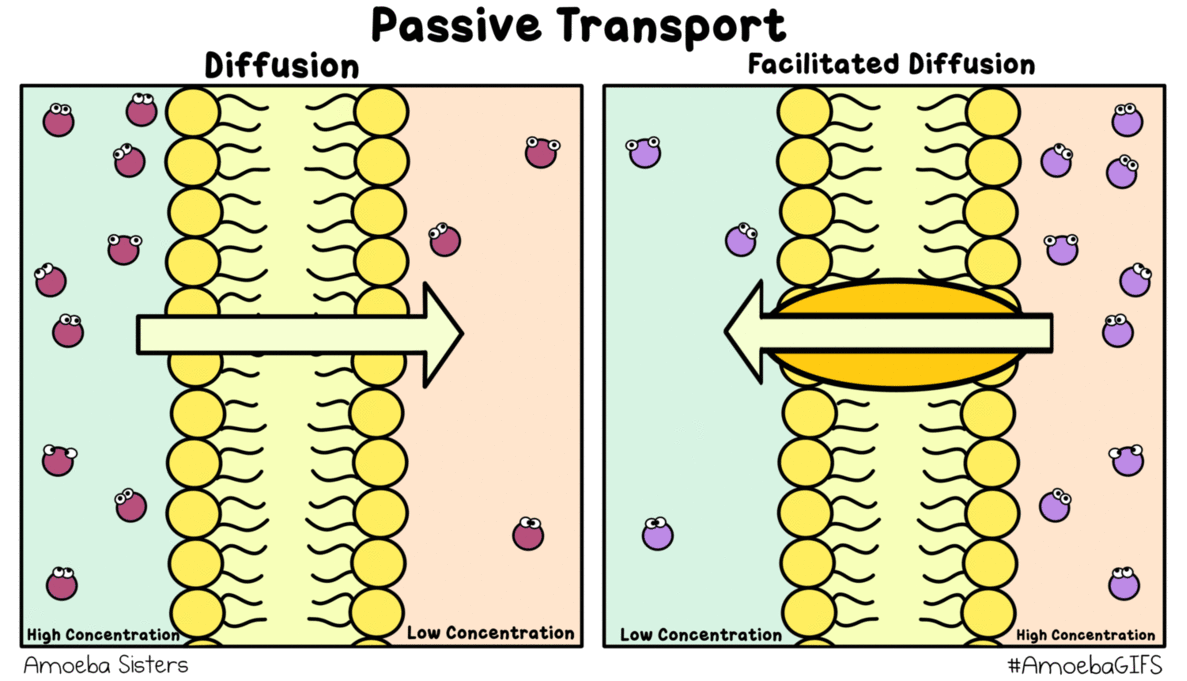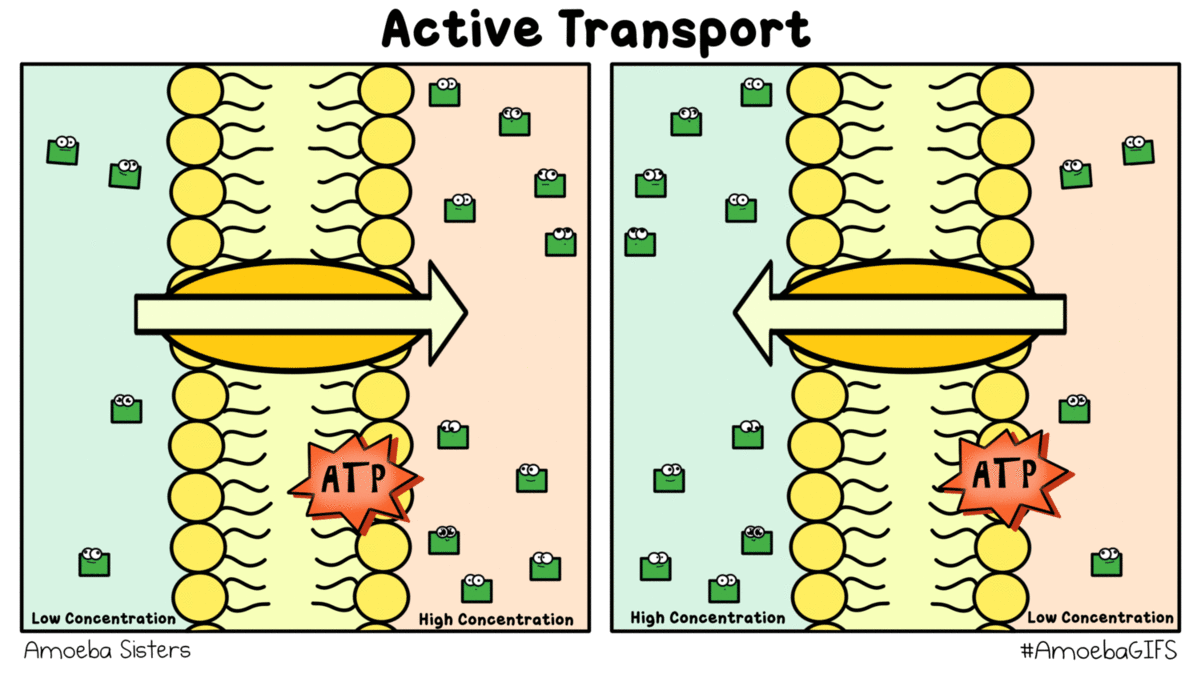Yesterday we learned about osmosis and diffusion. These processes occur when there is a high concentration of solutes somewhere. The image below shows diffusion.
These processes occur automatically, and they do not require energy to be used to move the particles around. This is because energy has already been put into GATHERING the solutes in a high concentration in one place. Because these processes do not require energy, we call these things passive transport.
Thanks again, Amoeba Sisters. Please look at their site for tons of great biology animations.
In the image above, you can see particles diffusing right through the cell membrane. Water, oxygen gas, and carbon dioxide can do this. On the right you see particles moving through what looks like a tunnel. That is a membrane protein channel, which allow substances like salts to move through. Salts can't get through the cell membrane on their own. This is still passive transport- the salts are diffusing, but they have to go through a special pathway.
Sometimes the cell needs to use energy to move things around. Some molecules (like proteins and sugars) are too big to fit through the cell membrane, and the cell needs to use energy to bring them in. Sometimes the cell needs to move things from low concentration to high concentration (the opposite direction of diffusion!). These things take energy in the form of ATP, and this is called active transport.
It turns out that the cell membrane is a lot more interesting than we have portrayed it to be. You can watch a video of all of this transport in action below.
You can download the guided notes here. You can download today's powerpoint here. Snowbound kiddos - I know there's a blizzard, but you're still responsible for this content!
Finally, if you'd like to have someone else explain this all to you, please visit this site from Diffen.com or view this interactive animation from Wiley.



No comments:
Post a Comment